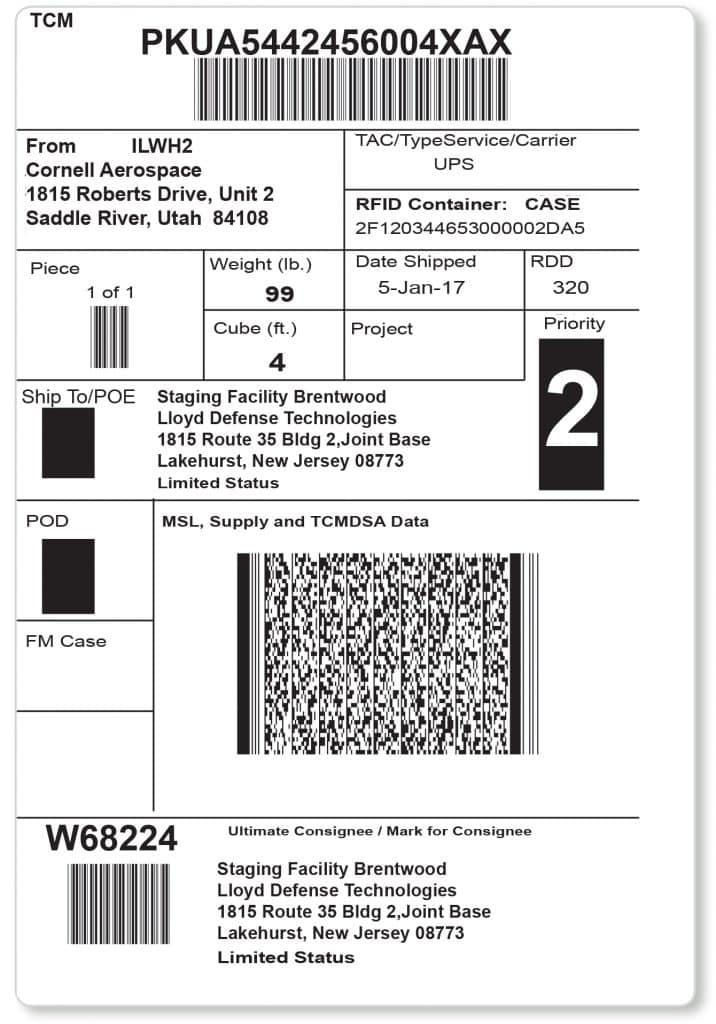The key differences between these two Military Standards is that MIL-STD-130 contain the regulations for Item identification and MIL-STD-129 contain the regulations for Shipping identification.
What is MIL-STD-130
Military Standard 130 (or MIL-STD-130) is the asset identification standard for the US Department of Defense that gives directions on how to mark and label each piece of equipment.
MIL-STD-130 dictates, among many other things, the use of a two-dimensional Data Matrix barcode to be used on all qualifying assets. This 2D Data Matrix barcode when scanned connects the user immediately to that particular record in the IUID Registry. MIL-STD-130 also describes the various types of compliant materials and marking methods that can be used for labels and plates on the asset. The standard also discusses label size options and goes into the data requirements and differences between the Construct 1 and Construct 2 formats.
Most importantly, MIL-STD-130 clearly states that all qualifying DoD assets need to be associated with Item Unique Identification (referred to as IUID in the military). The purpose of this IUID is to have a globally unique number associated with a particular item for all time. To that end, MIL-STD-130 also dictates that IUID labels need to be permanently affixed to the asset and be readable for the life of that asset. Each IUID is a unique identifier containing specific data pertinent to that individual asset. This unique barcode is used by the DoD and by Defense contractors to track and report information about that item throughout the entirety of its lifecycle.
What is MIL-STD-129
Military Standard 129 (or MIL-STD-129) provides details and establishes the standards for Military Shipping Labels so that all shipments are easily identified in a consistent manner. Although similar to IUID, or MIL STD 130 Labels, these MIL STD 129 Labels are specifically designed for marking and identifying military shipments, such as containers or pallets. At its most basic level, Military Shipping Labels (MSLs) are used to identify who the shipper is, what supplies or assets are being delivered and the final destination of the shipment.
If you have a MIL-STD-129 clause in your contract, it will identify whether an RFID tag is required as an embedded inlay in the military shipping label. DLA locations that are equipped with RFID reading capability, can read tags off of the pallets or cases they’re receiving in order to expedite the accountability. Using the RFID technology from these military shipping labels the DLA is able to streamline their processes and automatically trigger payments back to the contractors directly from the receipt of the shipment.
Watch this quick video segment from our recent webinar to learn more about the difference between MIL STD 130 and MIL STD 129. This video also discusses the role that Auto-ID technology plays when it comes to DoD contract reporting obligations to WAWF and the IUID Registry. Click here to learn more about Military Shipping and IUID Compliance reporting.
Editors Note: This article was originally published in October, 2017. It has been updated for accuracy and comprehensiveness.

